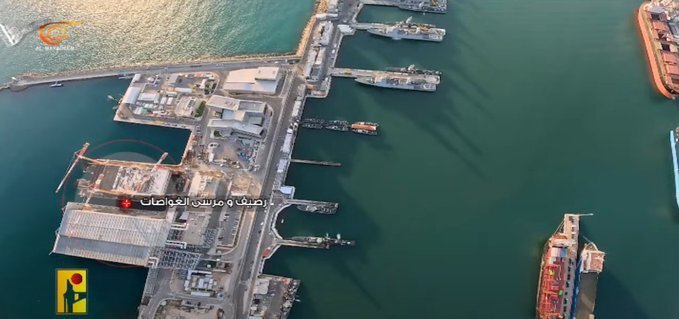In a move that has sparked widespread concern, Hezbollah recently published drone footage of sites in northern Israel, escalating tensions in an already volatile region. This development underscores the growing capabilities of non-state actors in leveraging advanced technology for both propaganda and potential military operations. Here, we will explore the implications of this action for Israel’s security, regional stability, and the broader geopolitical landscape.
Hezbollah’s Drone Footage: A Bold Statement
The footage, which was released by Hezbollah’s media outlets, showcases several strategic sites in northern Israel, including military bases and civilian infrastructure. The use of drones highlights Hezbollah’s increasing technological prowess and its ability to conduct surveillance operations within Israeli territory.
The release of this footage serves multiple purposes:
- Intimidation and Psychological Warfare: By demonstrating their ability to penetrate Israeli airspace and gather intelligence, Hezbollah aims to intimidate both the Israeli government and its citizens. This is a clear message that they possess the means to strike at significant targets if conflict arises.
- Propaganda Victory: The footage bolsters Hezbollah’s image as a powerful and capable organization within the region, potentially aiding in recruitment and support.
- Strategic Signaling: It signals to Israel and other regional actors that Hezbollah remains a formidable force with sophisticated capabilities.
The Growing Threat of Drone Technology
The use of drones by Hezbollah is not new, but their increasing sophistication and effectiveness represent a significant escalation. Drones offer several advantages:
- Surveillance and Reconnaissance: Drones provide real-time intelligence, enabling precise targeting and better strategic planning.
- Cost-Effective: Compared to traditional manned aircraft, drones are cheaper and can be deployed without risking human lives.
- Deniability and Flexibility: Drones can be operated remotely, making it easier for organizations like Hezbollah to deny direct involvement in certain activities.
Implications for Israeli Security
Israel has long faced threats from various non-state actors, but the introduction of advanced drone technology adds a new dimension to these challenges. The implications are profound:
- Increased Vulnerability: The footage demonstrates that even Israel’s heavily fortified northern region is not immune to surveillance and potential attacks.
- Need for Enhanced Air Defense: Israel must invest in and enhance its air defense systems to counter the threat posed by drones, which are smaller and more difficult to detect than traditional aircraft.
- Intelligence and Counterintelligence Efforts: Strengthening intelligence operations to detect and thwart drone incursions before they can gather critical information or conduct attacks is crucial.
Regional and Global Repercussions
Hezbollah’s actions have broader implications beyond Israel’s immediate security concerns:
- Regional Stability: This development adds another layer of tension in the Middle East, where various conflicts and rivalries are already at play. It could provoke a new cycle of retaliation and escalation.
- International Security Concerns: The proliferation of drone technology among non-state actors poses a challenge to global security, as it becomes easier for these groups to conduct operations that were once the domain of state actors.
Israel’s Response and Future Actions
Israel has traditionally responded swiftly and decisively to threats from Hezbollah, and it is likely that this incident will prompt a series of responses aimed at mitigating the threat:
- Enhanced Surveillance: Increasing surveillance and intelligence operations to better monitor and respond to drone threats.
- Diplomatic Measures: Engaging with international allies to exert pressure on entities that supply Hezbollah with drone technology.
- Military Preparedness: Boosting military readiness in the northern regions to respond to any potential escalation resulting from this threat.
Conclusion
The publication of drone footage by Hezbollah is a stark reminder of the evolving nature of security threats in the modern world. As technology continues to advance, the ability of non-state actors to acquire and use sophisticated tools will only increase, posing new challenges for nation-states. For Israel, this incident underscores the need for continued vigilance, technological investment, and robust defensive measures to safeguard its territory and citizens from emerging threats.

